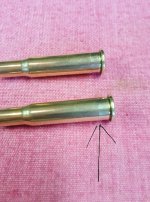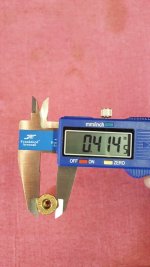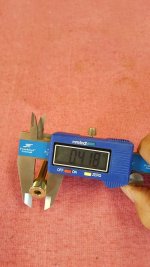My concern is that the base is actually smaller than specs.
You're overthinking things a little. Go check the base of a new factory round.
It's going to be smaller than the spec.
Unless there is a +/- on the spec, or other information, always assume it is the maximum allowed.
Chambers and ammunition specs have tolerances. Ammo makers always try to produce cases on the minimum end of the range, so they will chamber in guns with minimum spec chambers. Its just common sense. Fit in the minimum everyone is happy, and you sell more ammo. Be technically in spec but chamber hard in some guns (min spec chambers), those owners won't buy your ammo, and they will tell their friends, your stuff is no good, as well.
Rimmed cases headspace on the rim. All the chamber has to be is large enough to allow reliable chambering, and not so large as the brass ruptures on firing. Period. Goes Bang every time, is the standard. It's nice when the chamber/case/sizing die fit is close enough to allow repeated reloading of fired brass, but rifle makers are under no compulsion to ensure that, even if they could.
Size your brass to fit your rifle with the least amount of working the case as possible and shoot moderate or light loads and the cases will last as long as possible. A ...generous...chamber and full length resizing usually means a shorter case life.
You can section (cut) a case and see how thick the brass is just above the solid head. (you can find pics on the web) or use the "paper clip" method to feel for the ring that will form as the case thins just before head separation. Find a thin spot, the case is DONE, toss it in the scrap brass recycle and move on.



